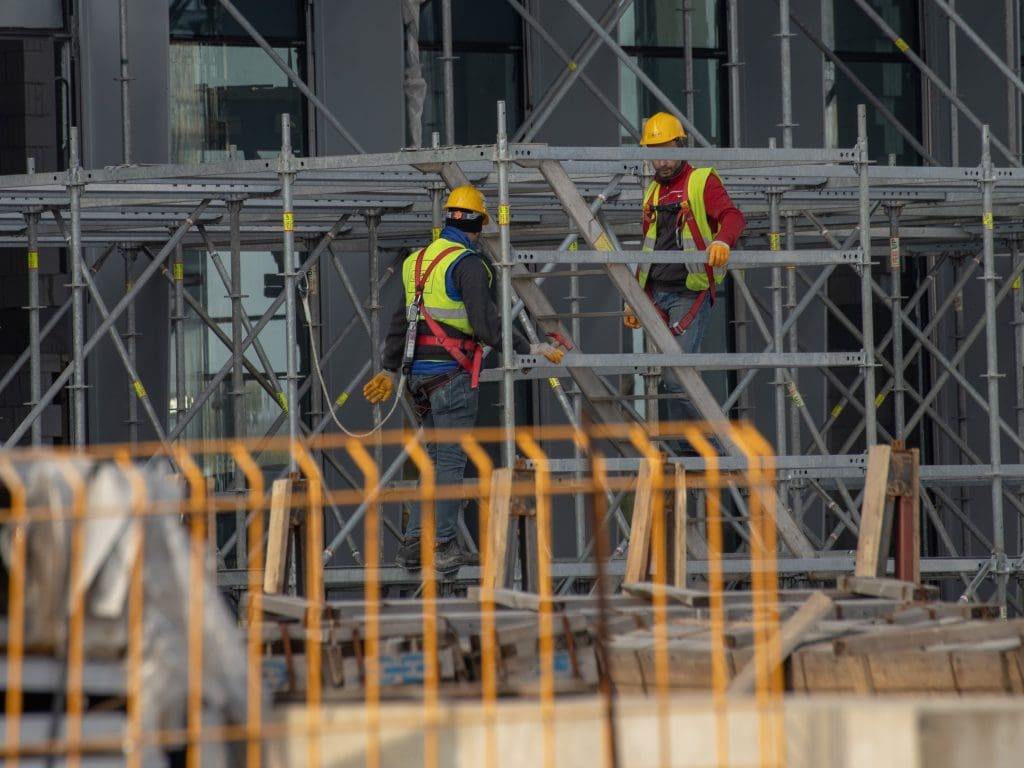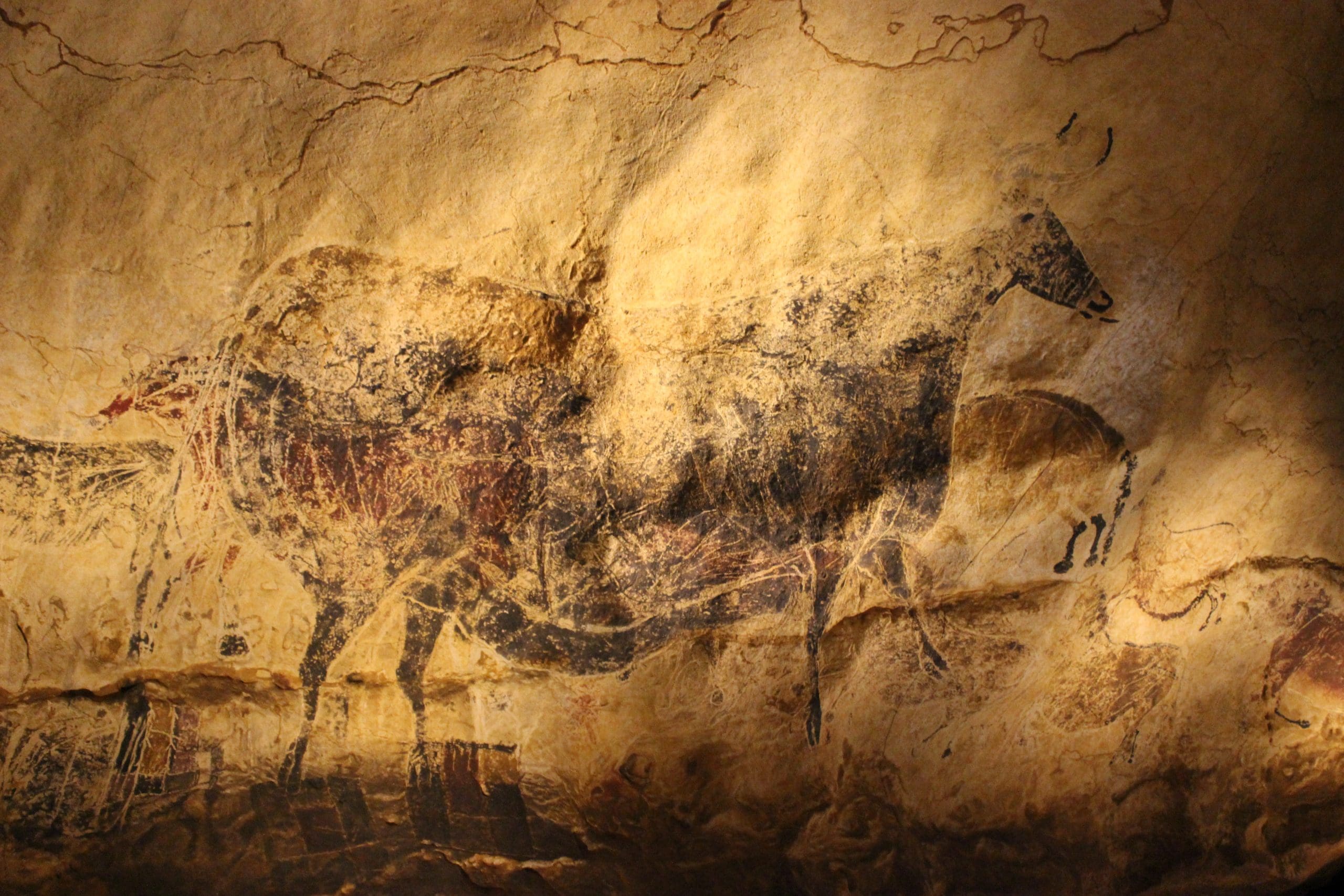Why Leading Contractors Prefer System Scaffolding Over Frame and Brace
The right choice of scaffolding type cuts costs by being fast to erect and dismantle while minimizing your fleet overhead… Read More

Ever since human beings started building upward, they have used scaffolding of some kind to help achieve their goals. Scaffolding’s origins can be traced back thousands of years. In this article, we explore the fascinating history of scaffolding, from its primitive beginnings to its modern-day innovations.
If you have the chance to visit the caves of Lascaux in western France, you will see walls covered with thousands of colorful images of animals including horses, bulls, and deer, as well as abstract symbols and human figures, which were painted 17,000 years ago. What makes some of these paintings even more remarkable is their placement high on the cave walls, suggesting the use of rudimentary scaffolding by prehistoric artists to reach such heights.

Indeed, evidence of sockets surrounding the paintings supports the theory that Paleolithic people constructed a scaffold-like structure to reach hard-to-access areas of the cave. This is believed to be the first use of scaffolding.
Moving forward in history, we arrive in ancient Egypt during the construction of the awe-inspiring Great Pyramid of Giza, built in the 26th century BC. Constructed from 2.3 million massive stone blocks, each weighing between 2.5 to 10 tons, the pyramid’s construction remains a mystery.
While it remains a mystery how ancient Egyptians built the Great Pyramid without the help of modern construction machinery, Greek historian Herodotus believed that wooden scaffolds were used to lift the colossal stones with the help of ropes. According to his accounts, these scaffold-like structures were constructed on each level of the pyramid.

It was believed that Egyptians used scaffolds consisting of planks and wooden uprights that were connected by simple knots. Since wood was a scarce resource in ancient Egypt, scaffolding was commonly used only to build temples and statues.
While wooden scaffolds were believed to be first used by the Egyptians, the first use of modern scaffolding may have been in ancient China where bamboo was tied together using a rope to form structures similar to today’s scaffolding. In fact, certain Asian countries still widely use bamboo scaffolding to this day, but with more safety measures, of course.
As we progress to the Middle Ages, scaffolding becomes an integral part of construction, particularly as architectural techniques evolve. Wooden structures capable of supporting both workers and construction materials were developed, enabling the construction of everything from simple houses to intricate cathedrals.
Specially trained monks, commonly known as “scaffolder monks”, used scaffolds to build abbeys and churches until the 20th century. Their scaffolding consisted of strong squared timbers connected by ropes and crosspieces. Loading cranes were also used in this era.
In the 19th century, the Industrial Revolution resulted in the development of new materials and construction techniques. Given that wooden ‘staging’ structures would often collapse under their own weight, steel tubing (which was lighter than timber) was introduced. Steel scaffolds were also more durable and easier to assemble compared to wooden ones. However, a significant challenge arose with metal poles slipping when connected by ropes.

To resolve this issue, Daniel Palmer-Jones, often dubbed the “Grandfather of Scaffolding,” and his brother David invented standard fixings to better secure both wooden and metal poles. The duo introduced “Scaffixers”, which were more secure and flexible than rope, as well as the “Universal Coupler”. These inventions proved so impressive that the brothers were entrusted with the renovation of Buckingham Palace, where they experimented with cutting-edge techniques.
Years later, David made some refinements to the first Universal Coupler prototype and invented the “Improved Universal Coupler”. This soon became the standard shape used by the scaffolding industry today. It was seen as a revolution in the history of scaffolding to use two-inch water pipes because standardizing the dimensions and parts ultimately led to better safety and stability.
During this era, the introduction of new building materials like concrete and steel also required new types of scaffolding, resulting in the creation of specialized system scaffolding to meet these needs. In the 1950s, system scaffolding was common, and in the 1980s, mobile scaffolds were invented, which allowed workers to easily move around scaffolds.
The aftermath of World War II brought a pressing need for reconstruction in Great Britain. A massive building program ensued, with unskilled laborers joining the workforce due to a shortage of skilled tradesmen. Unfortunately, this period witnessed poor health and safety practices, resulting in a high number of accidents.
However, the 1960s brought significant improvements, including the use of plastic sheeting and heaters to prevent slippery walkways during winter. Harnesses were introduced to safeguard workers against falls.
Today, scaffolding continues to evolve, adapting to technological advancements and stringent safety regulations. New materials have entered the market to simplify the erection, use, and dismantling of scaffold towers, prioritizing safety and efficiency.
With the integration of technologies such as artificial intelligence and robotics, the scaffolding industry stands on the brink of further transformation. Exciting changes lie ahead, promising an even safer and more innovative future for scaffolding users worldwide.